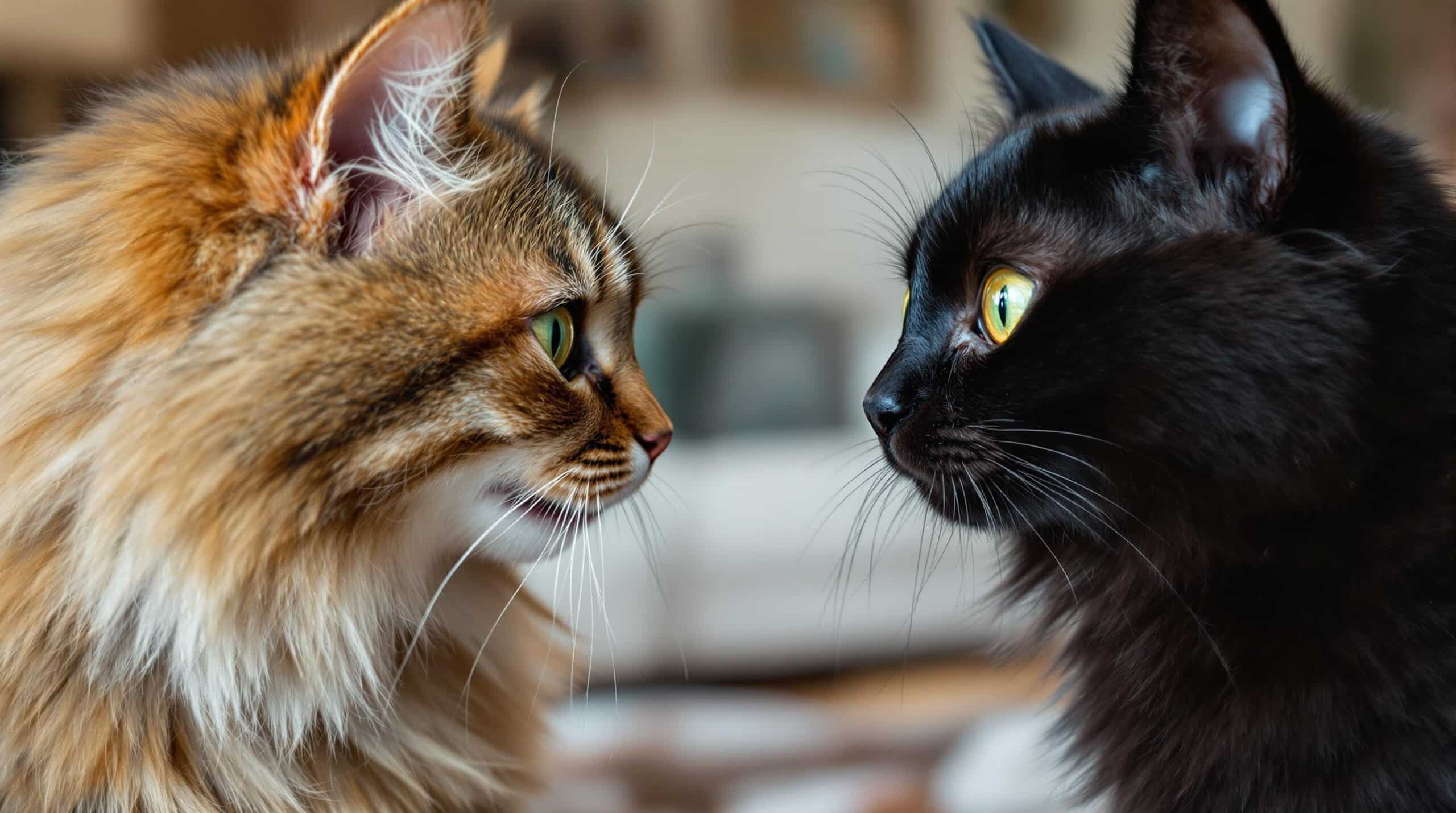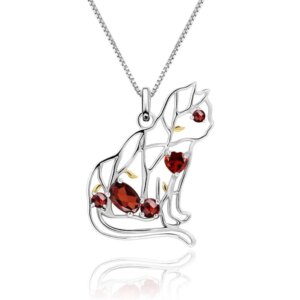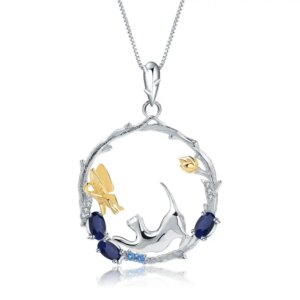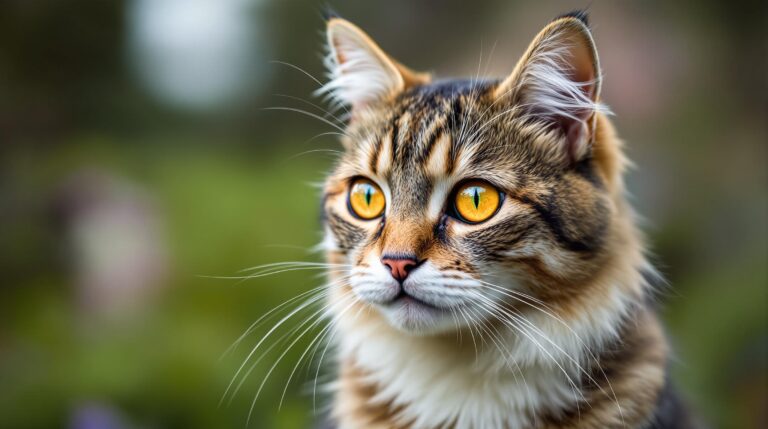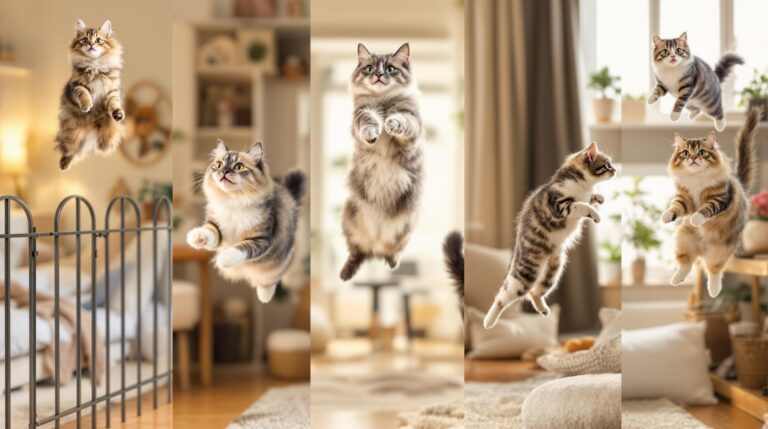Cats yowling at each other can be a concerning and disruptive behavior, but understanding the reasons behind it can help you manage and resolve the issue. At Cat Karma Creations, we understand the importance of a harmonious home for your feline friends. This article will explore the various causes of cat yowling, provide insights into cat communication, and offer practical tips for creating a peaceful environment for your cats. By the end, you’ll have a better understanding of why cats yowl and how to address this behavior effectively.
Why Cats Yowl at Each Other
Communication and Distress Signals
Cats yowling at each other is often a form of communication. It can serve as a way for them to convey different messages, ranging from distress signals to territorial warnings. Understanding these vocalizations is crucial for addressing the underlying issues. For instance, a cat may yowl to indicate that it feels threatened or to express discomfort due to pain or stress. By paying attention to these signals, you can better respond to your cat’s needs.
Additionally, yowling can be a way for cats to communicate with each other when they are in distress. This can occur in situations where a cat feels isolated, scared, or in pain. Recognizing these signs and providing appropriate support can help reduce the frequency and intensity of yowling. If you need further assistance, feel free to contact us at our contact form or reach out to us at info@catkarmacreations.com.
Territorial Behavior
Cats are territorial animals, and yowling can be a way for them to assert dominance or defend their territory. This behavior is particularly common in multi-cat households or when new cats are introduced. Cats may yowl to warn other cats to stay away from their space or to communicate their presence. Understanding the territorial dynamics can help you manage these behaviors effectively.
For example, providing each cat with its own designated space, such as a separate feeding area or litter box, can help reduce territorial conflicts. Additionally, using pheromone diffusers or sprays can help create a more calming environment and reduce stress-related yowling. Our shop offers a variety of calming aids and cat-themed gifts that can help your cats feel more at ease.
Mating Calls
Another reason cats yowl at each other is during the mating season. Unneutered male cats may yowl to attract females or to challenge other males. Similarly, female cats in heat may yowl to signal their availability. This type of yowling can be particularly loud and persistent, making it disruptive for both the cats and their human caregivers.
Spaying or neutering your cats can significantly reduce or eliminate mating-related yowling. If you have a multi-cat household, it’s important to have all the cats spayed or neutered to prevent conflicts and reduce the likelihood of yowling. For more information on our cat-themed jewelry and gifts, visit our All Jewelry section.
Stress and Anxiety
Cats yowling at each other can also be a sign of stress or anxiety. Various factors can contribute to this, including changes in the environment, the presence of new people or pets, or underlying health issues. Cats are sensitive creatures, and even minor changes can cause them to feel anxious or stressed.
Identifying the source of stress is crucial for addressing yowling. Creating a calm and safe environment, providing plenty of hiding spots, and maintaining a consistent routine can help reduce stress. Additionally, using calming aids such as pheromone sprays or diffusers can be beneficial in managing anxiety-related yowling. Our shop offers a range of calming aids and cat-themed gifts to help your cats feel more relaxed.
Common Causes of Cat Yowling
Health Issues
Cats yowling at each other can sometimes be a symptom of underlying health issues. Conditions such as hyperthyroidism, kidney disease, and dental problems can cause discomfort and lead to increased vocalization. If your cat suddenly starts yowling more frequently, it’s important to consult a veterinarian to rule out any health concerns.
Regular check-ups and dental cleanings can help maintain your cat’s health and reduce the likelihood of yowling due to pain or discomfort. If a health issue is identified, appropriate treatment can help alleviate the symptoms and reduce yowling. For more information on our cat-themed jewelry and gifts, visit our Cat Themed Jewelry section.
Environmental Factors
The environment in which your cats live can significantly impact their behavior, including yowling. Factors such as noise levels, lighting, and the presence of other pets or people can contribute to increased vocalization. Cats are sensitive to their surroundings, and even minor changes can cause them to feel stressed or anxious.
Creating a calm and quiet environment can help reduce yowling. Providing a dedicated space for your cats, away from high-traffic areas, can give them a sense of security. Additionally, using calming aids such as pheromone sprays or diffusers can help create a more relaxed atmosphere. Our Nature Inspired collection offers a variety of calming aids and cat-themed gifts to help your cats feel more at ease.
Social Dynamics
The social dynamics within a multi-cat household can also influence yowling behavior. Cats have complex social hierarchies, and conflicts can arise when these hierarchies are disrupted. Yowling can be a way for cats to assert their dominance or to communicate their presence to other cats.
Understanding the social dynamics of your cats can help you manage conflicts and reduce yowling. Providing each cat with its own space, such as separate feeding areas and litter boxes, can help reduce territorial disputes. Additionally, introducing new cats gradually and providing plenty of positive reinforcement can help establish a harmonious environment. For more information on our cat-themed jewelry and gifts, visit our Sterling Silver collection.
Boredom and Loneliness
Cats yowling at each other can also be a sign of boredom or loneliness. Cats are intelligent and social animals, and they need mental and physical stimulation to thrive. Lack of interaction and playtime can lead to increased vocalization as a way for cats to seek attention.
Providing plenty of toys, puzzle feeders, and interactive playtime can help reduce boredom and loneliness. Additionally, setting aside time each day for one-on-one interaction with your cats can help strengthen your bond and reduce yowling. Our shop offers a variety of toys and interactive items to keep your cats engaged and entertained.
Managing Cat Yowling
Calming Techniques
Calm and relaxed cats are less likely to yowl at each other. Implementing calming techniques can help reduce stress and anxiety, leading to a more harmonious environment. Some effective calming techniques include:
- Using pheromone sprays or diffusers to create a calming atmosphere
- Providing plenty of hiding spots and elevated perches for your cats to feel secure
- Maintaining a consistent routine to reduce uncertainty and stress
- Using calming music or white noise to create a soothing environment
By incorporating these techniques into your daily routine, you can help reduce yowling and promote a more peaceful home for your cats. For more information on our calming aids and cat-themed gifts, visit our shop.
Behavioral Modification
Behavioral modification techniques can be highly effective in managing cats yowling at each other. These techniques involve training your cats to respond differently to certain triggers and reinforcing positive behaviors. Some strategies include:
- Positive reinforcement, such as rewarding your cats with treats or praise for calm behavior
- Clicker training to help your cats associate certain sounds with positive actions
- Desensitization, gradually exposing your cats to triggers that cause yowling in a controlled and positive manner
- Counterconditioning, teaching your cats to associate previously negative experiences with positive outcomes
By consistently applying these techniques, you can help your cats develop healthier behaviors and reduce yowling. For more information on our cat-themed jewelry and gifts, visit our All Jewelry section.
Environmental Changes
Making changes to your cat’s environment can also help manage yowling. Creating a more enriching and stimulating environment can reduce boredom and loneliness, leading to less vocalization. Some environmental changes to consider include:
- Providing a variety of toys and puzzle feeders to keep your cats mentally engaged
- Setting up scratching posts and climbing structures to encourage physical activity
- Creating a dedicated space for each cat, with separate feeding areas and litter boxes
- Introducing new stimuli, such as bird feeders or interactive games, to keep your cats entertained
By making these changes, you can create a more engaging and fulfilling environment for your cats, reducing the likelihood of yowling. For more information on our cat-themed jewelry and gifts, visit our Cat Themed Jewelry section.
Consulting a Veterinarian
If you’re struggling to manage cats yowling at each other, consulting a veterinarian can be a valuable step. A veterinarian can help identify any underlying health issues that may be contributing to the behavior and provide guidance on appropriate treatments. They can also offer advice on behavioral modification techniques and recommend products or resources to help manage yowling.
In addition to a veterinarian, you may want to consider consulting a professional cat behaviorist. These experts can provide in-depth assessments and tailored recommendations to address specific behavioral issues, including yowling. For more information on our cat-themed jewelry and gifts, visit our Nature Inspired collection.
Preventing Cat Aggression and Yowling
Creating a Safe Space
Creating a safe and secure environment is essential for preventing cat aggression and yowling. Cats need a place where they can retreat and feel secure, especially in multi-cat households. Some tips for creating a safe space include:
- Providing plenty of hiding spots, such as cardboard boxes or tunnels
- Setting up elevated perches, such as cat trees or window perches
- Creating a quiet and low-traffic area for your cats to relax
- Using pheromone sprays or diffusers to create a calming atmosphere
By providing a safe and secure environment, you can help reduce stress and aggression, leading to less yowling. For more information on our calming aids and cat-themed gifts, visit our Sterling Silver collection.
Positive Reinforcement
Positive reinforcement is a powerful tool for preventing cat aggression and yowling. By rewarding your cats for calm and positive behaviors, you can encourage them to develop healthier habits. Some strategies for using positive reinforcement include:
- Providing treats or praise when your cats exhibit calm behavior
- Using clicker training to reinforce positive actions
- Offering playtime and interaction as a reward for good behavior
- Creating a positive association with new experiences or triggers that may cause yowling
By consistently using positive reinforcement, you can help your cats develop a more positive and relaxed demeanor, reducing the likelihood of yowling and aggression. For more information on our cat-themed jewelry and gifts, visit our shop.
Regular Play and Interaction
Regular play and interaction are essential for preventing cat aggression and yowling. Cats need mental and physical stimulation to stay happy and healthy. Some tips for incorporating play and interaction into your daily routine include:
- Scheduling regular playtime sessions with your cats
- Using interactive toys, such as wand toys or treat-dispensing toys
- Creating an obstacle course or puzzle feeders to keep your cats engaged
- Providing one-on-one interaction to strengthen your bond with each cat
By making play and interaction a priority, you can help reduce boredom and loneliness, leading to less yowling and a more harmonious home. For more information on our cat-themed jewelry and gifts, visit our All Jewelry section.
Introducing New Cats Gradually
Introducing new cats to your household can be a delicate process, and doing so gradually is crucial for preventing aggression and yowling. Some tips for a smooth introduction include:
- Keeping new cats in a separate room initially to allow them to acclimate
- Gradually introducing the cats through scent swapping, such as swapping blankets or toys
- Supervising initial interactions and using positive reinforcement to reward calm behavior
- Providing plenty of resources, such as food, water, and litter boxes, to prevent competition
By taking a gradual and thoughtful approach to introducing new cats, you can help prevent conflicts and reduce yowling. For more information on our cat-themed jewelry and gifts, visit our Cat Themed Jewelry section.
Comparison of Cat Vocalizations
| Feature | Cat Yowling | Cat Hissing | Cat Meowing |
|---|---|---|---|
| Purpose | Communication, Distress | Warning, Defense | Attention, Greeting |
| Behavioral Context | Aggression, Mating, Territorial | Threat, Fear, Anger | Hunger, Playfulness, Greeting |
| Common Causes | Stress, Pain, Territorial Disputes | Threatened, Scared, Agitated | Hunger, Boredom, Seeking Attention |
| Management Techniques | Calming Techniques, Environmental Changes | Safe Spaces, Positive Reinforcement | Scheduled Feeding, Playtime, Attention |
| Impact on Other Cats | Can Cause Stress, Aggression | Can Cause Fear, Avoidance | Can Attract Attention, Encourage Interaction |
Popular Quote
“Cats are a mysterious kind of folk. There is more passing in their minds than we are aware of.” — Charles de Secondat, Baron de Montesquieu
Statistical Fact
According to a study by the American Veterinary Medical Association, approximately 30% of cat owners report their cats exhibiting some form of vocalization, such as yowling, at least once a day. This statistic highlights the prevalence of yowling behavior and the importance of understanding and managing it to ensure a harmonious home environment. (Source: American Veterinary Medical Association)
Three Tips for Managing Cat Yowling
- Provide a Safe Space: Create a designated area for your cats where they can retreat and feel secure. This can include elevated perches, hiding spots, and a quiet, low-traffic area.
- Use Calming Aids: Pheromone sprays and diffusers can help reduce stress and anxiety, leading to less yowling. Our shop offers a variety of calming aids to help your cats feel more at ease.
- Regular Play and Interaction: Engage your cats in regular playtime and interaction to reduce boredom and loneliness. Interactive toys and one-on-one sessions can strengthen your bond and reduce yowling.
Popular Questions
- Why do cats yowl at night? Cats are naturally crepuscular, meaning they are most active during dawn and dusk. Yowling at night can be a way for them to communicate, express discomfort, or seek attention. Providing a comfortable and stimulating environment can help reduce nighttime yowling.
- Can yowling be a sign of pain? Yes, yowling can be a sign of pain or discomfort. If your cat suddenly starts yowling more frequently, it’s important to consult a veterinarian to rule out any underlying health issues.
- How can I introduce a new cat to my household? Introduce new cats gradually to prevent conflicts and reduce yowling. Keep the new cat in a separate room initially, swap scents, and supervise initial interactions. Positive reinforcement can help make the process smoother.
- What are some calming aids for cats? Pheromone sprays and diffusers, calming music, and white noise can help create a more relaxed environment for your cats. Our shop offers a variety of calming aids to help your cats feel more at ease.
Final Thoughts About Cats Yowling at Each Other
Cats yowling at each other can be a complex issue, but with the right understanding and management techniques, you can create a peaceful and harmonious environment for your feline friends. By addressing the underlying causes and implementing effective strategies, you can reduce yowling and improve the overall well-being of your cats. If you need further assistance, don’t hesitate to contact a veterinarian or a professional cat behaviorist. For more information on our cat-themed jewelry and gifts, visit our shop or reach out to us at our contact form or info@catkarmacreations.com.
At Cat Karma Creations, we are dedicated to helping you create a happy and harmonious home for your cats. Explore our range of cat-themed jewelry and gifts, and feel free to contact us for any assistance or custom orders. Together, we can make a difference in the lives of our feline friends.

